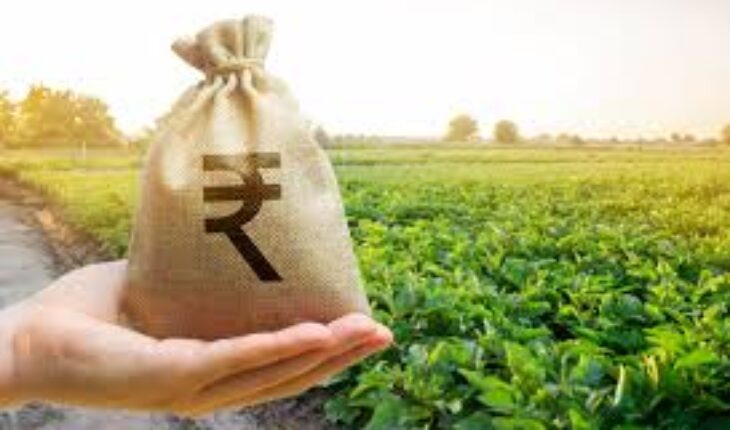
Agriculture has remained the backbone of India’s economy. The share of agriculture and allied sector in total Gross Value Added (GVA) has witnessed a declining trend. In 1950, the share was 65 percent and came down to 17 percent of GVA (at 2011-12 constant prices) in 2022.
Even with a lower share, the agriculture, and allied sectors, today provide the largest share of employment in the country. According to the PLFS report 2020-21, about 50 percent of rural households earn their living out of agriculture, which constitutes 39 percent self-employment and 11 percent casual employment. The agriculture sector has its own importance because of its connection with people’s lives. It has the capacity to absorb the surplus labour force during an economic slowdown, though at a smaller wage rate.
Agriculture is dominated bythe private sector as land, the primary input in the production processis owned by private individuals. However, it is one of the poorest private sectors in the country. A larger section i.e. above 70 percent of rural agriculture households possess just less than a land size of 1 hectare. Many cultivators are also landless. Above 50 percent of poor households live on agriculture as their primary source of income. This adds to the necessity of government interventions to provide basic inputs such as power, irrigation, seed, fertilizer, machinery, bank credit, etc. Some of the basic inputs are either provided in kind or in cash.
Agriculture is a state subject. Because of its connection with society and the economy, the union government intervenes to support the state in the development of the sector. In 2016-17, total union government spending was Rs.44,230 crores and it increased to Rs. 1.32 lakh crores in 2023-24(BE). The annual average of union government spending on the sector between 2015-16 and 2023-24 is 19.5 percent. A major push of union public spending took place in 2019-20 when the budget allocation became almost doubled from its previous year. Total union spending on agriculture here includes only spending under the Ministry of Agriculture and Farmers’ Welfare MoAFW and, the Ministry of Fisheries, Animal Husbandry and Dairy (MoFAD). The union government also spends on irrigation and fertilizer subsidies which fall under the other ministries contributing to the agriculture sector’s development.

The priority of the sector in the union budget has not significantly changed in the last decade. As a share of the total union budget, in 2016-17, the spending on agriculture was 2.2 percent and it increased to 3.9 percent in 2019-20. Since 2019-20, the share follows a declining trend, and it came down to 2.9 percent in 2023-24(BE). In 2021-22 and 2022-23(RE), the share was 3.3 percent and 3 percent respectively.
The total budgetary provision under the MoAFW and the MoFAD in 2023-24(BE) was Rs. 1.16 lakh crores and Rs. 9,500 crores respectively. Compared to the previous year i.e. 2022-23(RE), the union spending under these two ministries has gone up by 4.8 percent and 9.8 percent respectively.
The total budget allocation for the MoAFW is further divided into two departments namely, the Department of Agriculture and Farmers’ Welfare (DoAFW) and the Department of Agriculture Research (DARE). A larger share of total funds allocation goes towards the DoAFW. In 2023-24(BE), this share is 92 percent. The rest 8 percent i.e. Rs. 9,500 crores, goes to the DARE. In 2016-17, this share was 13.4 percent and over the years, the share has followed a diminishing trend.
The DoAFW spends the budget on various development schemes related to the agriculture sector. PMkisan, a universal direct cash transfer scheme for the farmers, has a budgetary allocation of Rs. 60,000 crores, which is about 52 percent of the total budget of the DoAFW in 2023-24(BE). However, there is a reduction of Rs.8,000 crores under this head compared to 2022-23(BE) but, equalizes with 2022-23(RE). Besides PMKisan, the Pradhan Mantri Fasal Bima Yojana (PMFBY) and Interest subsidy to farmers are two other major expenditure heads that constitute about 32 percent of the total budget allocation under the DoAFW. Rashtriya Krishi Vikas Yojana and Rastriya Krishionnati Yojana are two centrally sponsored schemes that constitute about 12.3 percent allocation in 2023-24(BE).
There is a 39 percent rise in budgetary allocation under the MoFAD in 2023-24(BE) from 2022-23(RE). Within this Ministry, the Department of Fisheries got a budgetary allocation of Rs. 2249 crores in 2023-24(BE) compared to Rs. 1624 crores in 2022-23(BE). A major share of the total allocation under this Department goes towards the Pradhan Mantri Matsya Sampad Yojana i.e. Rs. 2000 crores in 2023-24.
The Department of Animal Husbandry and Dairying, under the MoFAD, received a rise in total budgetary allocation from Rs. 3105 crores in 2022-23(RE) to Rs. 4328 crores in 2023-24(BE). A major of the total budget allocation i.e. about Rs. 2350 crores in 2023-24(BE) goes towards the central sector scheme Livestock Health and Disease Control Program. Two centrally sponsored schemes, Rashtriya Gokul Mission and National Livestock Mission received an allocation of Rs. 600 crores and Rs. 410 crores respectively.
The union budget 2023-24 has touched every aspect of the agriculture and allied sector and has tried to give a harder push to the fishery and animal husbandry. The research and innovation for the agriculture and allied sector need more emphasis to accelerate the pace of growth, enabling diversity, and productivity in the sector.
Dr. Sridhar Kundu, Bharti Institute of Public Policy ,Indian School of Business, Mohali, Punjab






